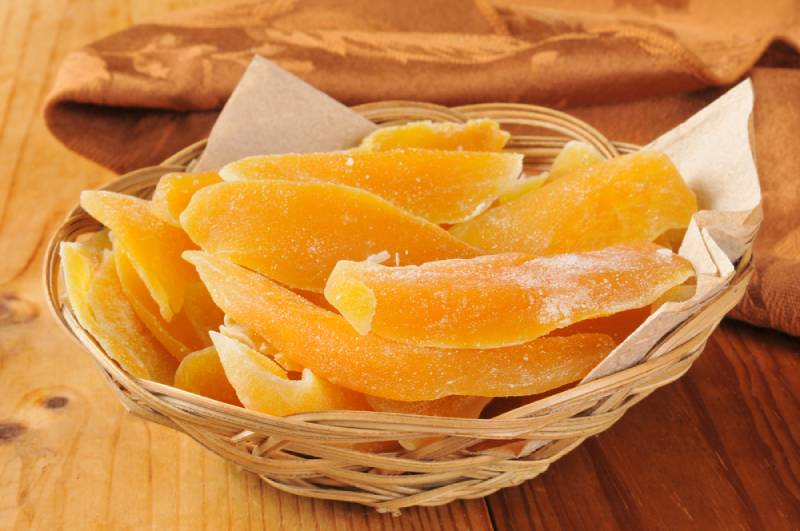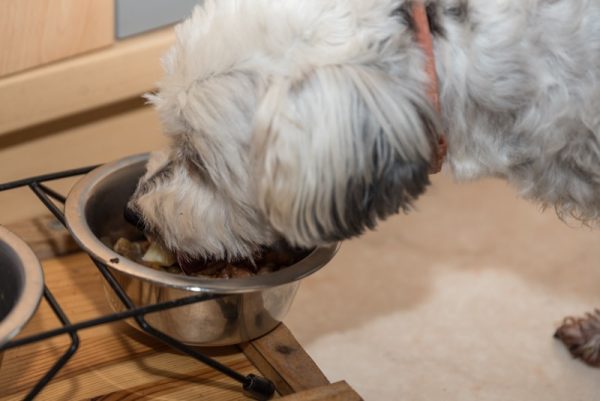A mango can be a beautiful, delicious, and healthy part of a human’s diet. When ripe, this juicy fruit is easy to eat and full of important nutrients that all bodies need for good health and a high quality of life. Dried mangoes are great alternative snack options when fresh mangoes are not in season or are not easy to find at the store.
You might notice your dog eyeing the dried mango that you’re about to eat and wonder whether it’s safe and healthy to share a piece with them. While dried mangoes are technically safe for dogs and aren’t the worst things that they could eat, they’re not the best snack options for dogs. Here is everything that you need to know.

Dried Mangoes Have Plenty of Nutrients, But…
While dried mangoes contain the vitamins, minerals, and antioxidants of fresh mangoes, they are also full of concentrated sugars that can contribute to weight gain and unstable blood sugar levels in your dog. Therefore, they’re not ideal snacks, especially if your dog suffers from obesity or diabetes.
It is not dangerous if your dog gets hold of a piece of dried mango, though. In fact, if your dog loves the fruit, it’s okay to offer them a bite or two occasionally. However, these offerings should be limited, and fresh mangos should be opted for instead whenever possible.

The Benefits of Feeding Fresh Mango to Your Dog
Fresh ripe mangoes are full of many of the important vitamins and minerals that dogs require to stay healthy throughout their lives. For example, mangoes contain vitamin A, which promotes healthy eyesight and organ function. They are also full of antioxidants, which help keep the immune system in good shape.
The high volume of fiber that mangoes have helps keep the digestive system in good condition and ensures regular bowel movements. All that fiber can prevent problems like constipation and diarrhea too. Mangoes even contain protein, a crucial part of any dog’s overall diet plan. A fresh mango is an excellent snack choice for dogs of all shapes and sizes.
Not All Parts of the Mango Are Safe for Dogs
The flesh of a mango is safe and healthy for dogs to eat, but the skin and seed should never be offered. Both are choking hazards that can turn snack time into a scary experience. The seeds of mangoes are large, and even if they do get swallowed, they can create an obstruction in the intestinal tract.
If this happens, food and liquids cannot pass through the gastrointestinal system and will cause pain, lethargy, and dehydration, among other problems. An obstruction can be deadly if it is not addressed quickly. Making sure your dog only eats the flesh of a mango will ensure that any risks are mitigated.
If you need to speak with a vet but can't get to one, head over to PangoVet. It's our online service where you can talk to a vet online and get the advice you need for your pet — all at an affordable price!
How to Feed Mango to Your Dog
After peeling a fresh mango, cut the flesh off the seed, and then slice the mango into small chunks. Then, add the chunks to your dog’s food, or offer them one by one as treats. You can freeze the chopped mango for later, such as spending time outdoors with your dog on a hot summer day.
Keep in mind that mangoes should only be served as snacks, so no more than about ¼ to ½ a cup should be offered in one sitting. When it comes to dried mangoes, pieces given to your dog should be no bigger than bite-sized, and no more than a piece or two at a time should be offered.

Conclusion
A mango is a great source of vitamins, minerals, and antioxidants for humans and dogs alike. But this sweet juicy fruit should not take up a large part of your dog’s diet. A fresh mango is always a healthier option than a dried mango, and both should only be offered as an occasional snack, not a daily staple.


















